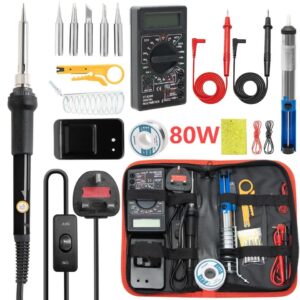Electronics is all about manipulating electrical energy, and this magic is made possible by two fundamental types of components: active and inactive (passive) components. Understanding their roles and distinctions can deepen your knowledge of how circuits work.
Active Components
Active components are those that require an external power source to operate and can control the flow of current or amplify signals. They play a crucial role in the functionality and versatility of electronic circuits.
Examples:
- Transistors: These act as switches or amplifiers, widely used in microprocessors and amplifiers.
- Integrated Circuits (ICs): Miniature circuits packaged into a single chip, performing complex functions.
- Diodes: Allow current to flow in one direction, used in rectifiers and signal demodulation.
- Vacuum Tubes: Once essential in older electronics for amplification and switching.
Features:
- Can amplify power or signals.
- Often non-linear in behavior.
- Require a source of energy to function.
Inactive (Passive) Components
Inactive, or passive, components do not require an external power source to perform their roles. They cannot amplify power but can influence voltage, current, or signal behavior within a circuit.
Examples:
- Resistors: Control the flow of current and reduce voltage levels.
- Capacitors: Store and release electrical energy, crucial in filtering and timing applications.
- Inductors: Store energy in a magnetic field and resist changes in current.
- Transformers: Transfer electrical energy between circuits with the help of electromagnetic induction.
Features:
- Do not amplify or generate power.
- Tend to have a linear response.
- Stable and predictable in operation.
Key Differences
| Aspect | Active Components | Inactive Components |
|---|---|---|
| Energy Dependency | Require external power to operate. | Do not need external power. |
| Functionality | Amplify or control signals. | Store, release, or resist energy. |
| Behavior | Often non-linear. | Primarily linear. |
Why Both Are Essential
Active components form the “brains” of electronic devices, enabling dynamic functions like signal processing, amplification, and switching. On the other hand, inactive components provide stability, regulation, and energy storage, forming the “skeleton” of a circuit.
Without passive components, active components can’t function optimally, and without active components, circuits can’t perform dynamic tasks. Together, they form the backbone of modern electronics.
Hi I am Marcus, MM0ZIF, a licenced Radio Amateur, Doctor of Musicology, amateur weather enthusiast. I over the years have been a Amateur Radio Tutor, Examiner, and a Regional Manager for the Radio Society of Great Britain.
This site is dedicated more towards Amateur Radio and Weather, with an angle on Technology too. I also maintain https://havenswell.com/ which is my other blog which is more aimed at cooking, hobbies and life in general as well as businness and networking.





